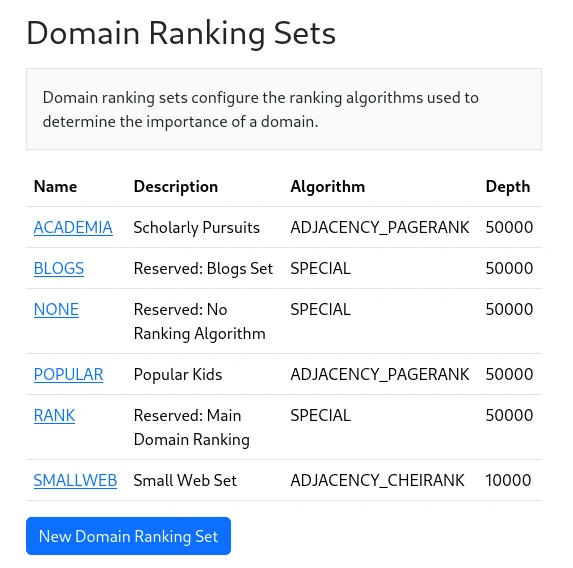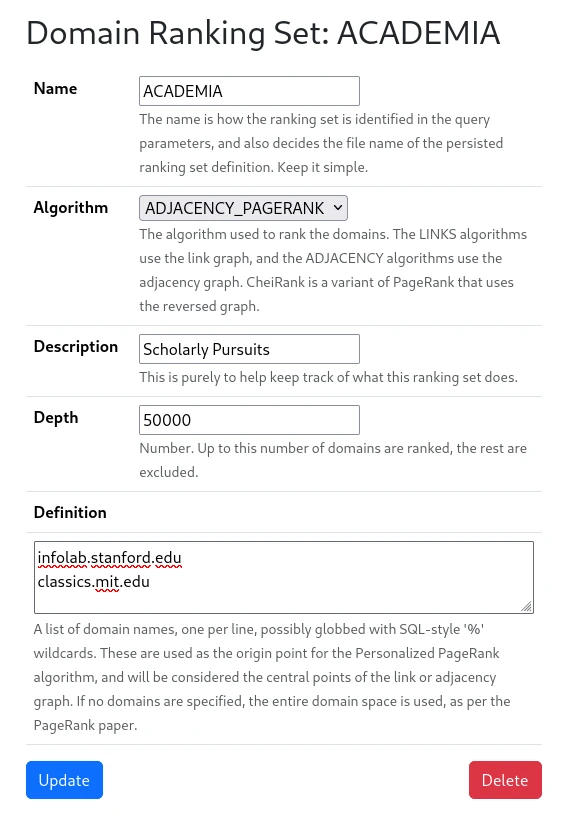3.3 Domain Ranking Sets
Under System -> Domain Ranking Sets, you will find a list of domain ranking sets. These are configurations for the
domain ranking system. The domain ranking system is a system for assigning a score to each domain, which affects the
order in which the domains are considered in the index. Thus a high ranking means results from a domain is more likely
to be returned in a query.
A few domain ranking sets are reserved, and cannot be deleted. These are the BLOGS, NONE and RANK. Additional
sets can be configured.

The BLOGS set is a set of domains that the system considers to be blogs. These are pulled from a Data Set URL, which
is configured under System -> Data Sets. NONE is a reserved set that permits all domains. RANK is a reserved set
that is used to rank domains.
RANK and the ad-hoc sets can be configured by clicking on the link. This will bring up a form that allows you to
configure the set. The form looks like this:

The Algorithm choice lets you choose which ranking algorithm to use:
- Link Pagerank - This is the standard PageRank algorithm, which is based on the link graph.
- Link CheiRank - This is the standard CheiRank algorithm, which is based on the link graph. CheiRank is the complement of PageRank, and is used to rank pages that are not linked to.
- Adjacency Pagerank - This is a Marginalia Search specific algorithm that is similar to the Link PageRank algorithm, but it uses a different graph.
- Adjacency CheiRank - This is a Marginalia Search specific algorithm that is similar to the Link CheiRank algorithm, but it uses a different graph.
In practice, you probably want to use the Link PageRank algorithm, as it is the most well-known, and the most well-tested.
(IMPORTANT UPGRADE NOTE: After version v24.01.2, the manual selection of Algorithm will go away.
The choice of algorithm will be made automatically based on whether you have provided a definition,
and based on whether an adjacency graph has been calculated)
The Depth parameter controls the size of the result set. Any domains not in the top N will be excluded from the ranking set.
The Definition field is a text area that lets you enter a list of domains. Each domain should be on a separate line. If populated, this is fed into the ranking algorithm to turn it into a Personalized PageRank algorithm. This is useful for creating a ranking set that is tailored to your specific tastes. For example, if you are a fan of a particular blog, you can add that blog to the definition, and the ranking algorithm will take that into account when ranking the domains. For a deeper explanation of what this does, see the original PageRank paper.